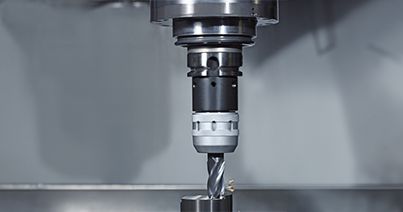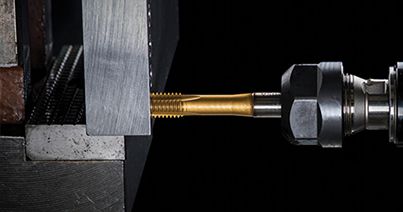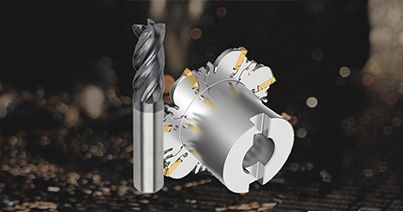
Many industries widely use Polycrystalline Diamond (PCD) tools due to their exceptional hardness and wear resistance. However, prolonged usage can lead to wear and dullness, reducing their effectiveness over time. Instead of replacing these expensive tools, reconditioning them is a cost-effective alternative. Learn how to recondition PCD and extend the lifespan of your diamond tools with valuable tips and benefits.
Understanding PCD
PCD is a composite material consisting of a diamond layer bonded to a carbide substrate. They are extremely hard and resistant to wear, which means they cut well and last a long time. They are about 10 times more productive than carbide solutions. Manufacturers commonly use PCD tools in high-precision machining operations such as boring, drilling, milling, and turning.
PCD tools are extremely versatile and can effectively machine a wide range of materials including aluminum alloys, composites, and non-ferrous. This versatility makes PCD tools a preferred choice in industries such as automotive, aerospace, and oil and gas, among others.
Exceptional Hardness in PCD Inserts
PCD tools have a reputation for their extraordinary hardness and are ideal for cutting difficult-to-machine materials. PCD inserts are designed with a unified structure of diamond particles that make it easy for the tools to cut through tough and abrasive materials.
The manufacturing of PCD tools allows for ultra-fine cutting edges. The sharpness enables precise and clean cutting, resulting in high-quality surface finishes and dimensional accuracy.
Indicators PCD Tools Need Reconditioning
There are several indicators that your PCD tools may need reconditioning. If you notice reduced productivity or an increase in machining time, poor surface finish, flatness, or exit burr, the PCD tool warrants reconditioning. Additionally, worn-out PCD tools may generate an increase in noise or vibrations during cutting operations. When you notice any of these signs, it’s time to consider reconditioning.
Benefits of Reconditioning:
There are several key advantages to reconditioning PCD tools. By removing worn-out diamond segments and replacing them with new ones, reconditioning services allow your tools to restore their cutting performance, allowing for prolonged efficiency and productivity.
Along with extending tool life, you can leverage reconditioning services including:
Saving on cost: PCD tools have an initial high-cost investment compared to traditional solid carbide cutting tools. By reconditioning these tools, you can significantly reduce expenses.
Reducing downtime: Replacing old PCD tools with new ones can cause long delays due to buying, setting up, and programming the tools. Reconditioning, on the other hand, offers a quicker turnaround time. This minimizes production interruptions and allows for seamless workflow continuity.
Sustainability and environmental benefits: Refurbishing and reusing tools reduces the demand for new tool production, resulting in a decreased environmental footprint. Additionally, reconditioning processes often involve recycling or repurposing the carbide portion of the tool, further reducing waste.
Customization: Here is where you can customize any tooling requirements based on specific machining needs. During reconditioning, changes can be made to the tool's shape, cutting-edge, or coating to improve its performance for specific uses.
Restoring Cutting Performance
Reconditioning PCD tools helps maintain their cutting performance, ensuring consistent and high-quality results. Over time, the diamond segments on PCD tools can wear out or become damaged, leaving burrs.
By reconditioning, the worn PCD segment of the tool is removed, and a fresh diamond segment is applied. This process restores the sharp cutting edges, allowing the tools to effectively machine various materials with precision, resulting in improved surface finish, dimensional accuracy, and reduced scrap rates.
Tips to Extend Diamond Tool Life
It is essential to maximize PCD performance to reduce overall production costs. Here are some tips to help you increase the life of your PCD tools:
Use the correct speeds, feeds, and depths of cut before you start machining.
Avoid drops and unwanted impacts which can lead to PCD chipping or breaking.
Provide sufficient through-coolant flow to dissipate heat and minimize friction.
Keep your diamond tools clean, free from debris, and regularly inspect them for damage.
Remove chips from your machines regularly to prevent them from damaging cutting edges.
Regular reconditioning can significantly extend the life of the tool and improve overall efficiency and maximize its value.
Summary
PCD tooling offers significant benefits which include cost savings, extended tool life, maintained cutting performance, reduced downtime, sustainability, and customization. By embracing reconditioning practices, you can optimize your tools, improve productivity, and contribute to a more sustainable and efficient manufacturing process.
For more on PCD and other tool reconditioning options, please visit our reconditioning services page.
Related Articles
- Buying Guide: Composite Materials Machining SolutionsWhen manufacturing composite materials, it is crucial to use top-notch equipment and techniques. Shop Kennametal's specialized tooling for composites now.When manufacturing composite materials, it is crucial to use top-notch equipment and techniques. Shop Kennametal's specialized tooling for composites now.
- Choose the Right Toolholder for Your Operations Choosing the right toolholder is critical for achieving precise and efficient machining results. Explore the fundamentals of toolholders and find out what you should know before choosing the right one for your operations.Choosing the right toolholder is critical for achieving precise and efficient machining results. Explore the fundamentals of toolholders and find out what you should know before choosing the right one for your operations.
- Different Types of Thread TapsLearn about the different types of thread taps and how to choose the right one for your operation. Discover basic tips for using thread taps effectively.Learn about the different types of thread taps and how to choose the right one for your operation. Discover basic tips for using thread taps effectively.
- Buying Guide: Four Things to Know About Milling Cutter SelectionGiven the huge variety of solid and indexable milling cutters available online today, it can be challenging to choose the right one for a machining application. Here’s a quick primer to get you started.Given the huge variety of solid and indexable milling cutters available online today, it can be challenging to choose the right one for a machining application. Here’s a quick primer to get you started.



